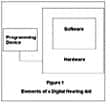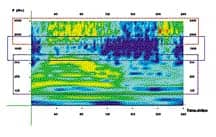What does it mean for dispensing professionals?
Most of us would assume, once hair cells die, the condition is permanent. Researchers at the Virginia Merrill Bloedel Center in Seattle, as well as in other research facilities across the world, have different ideas…
Hair cell regeneration was not a major topic of research in hearing science until 1986-87. At that time, my group was one of two that discovered mature birds had the remarkable natural ability to restore their inner ear hair cells. This restoration occurred after either damage produced by loud noises or after damage produced by certain ototoxic drugs like antibiotics (Figure 1).

The finding was quite startling to us, as well as to the rest of the scientific community. Confirmation through DNA technology supported what we were seeing. After damage occurred, there were indeed new hair cells generated by renewed cell division in several species of fully mature birds.

We now know that all vertebrates, except mammals, can regenerate new hair cells in the inner ear after native hair cells are damaged or destroyed. In parts of the inner ear of some animals, there is ongoing production and death of hair cells (like the “turnover” of skin cells) throughout life. In other animals, new cells are produced only when there is damage to the native ones. We and others are working hard to understand the molecular chain of events responsible for hair cell regeneration in species where it occurs. This may provide clues for how to make it happen in humans and other mammals.
The work on mammals now is at a point where we can induce a small amount of cell division in the inner ear in a dish (that is, in a culture), as well as in vivo (occurring within a living organism). This has been done on mice, guinea pigs, and rats using a variety of growth-promoting molecules. We have also discovered one gene (and there will be others) that is responsible for turning off the production of hair cells during development and may be involved in preventing regeneration.
Therefore, we at least know that it’s possible to induce the first stage of regeneration to a limited extent in the inner ear sensory epithelium of mature mammals. The sensory epithelia make up parts of the inner ear that cause the initial response to sound and balance. So, most of the success has been located in the vestibular portions of the inner ear, but we and others are working on the cochlea. In fact, a team of researchers has recently used new findings from research on development of the inner ear to induce a few new cells in the guinea pig cochlea to become hair cells—again proving that hair cell regeneration will be possible.
The good news is that, for the first time in history, there are teams of investigators worldwide exploring the possibility that hair cell regeneration can be induced in the mammal and human cochlea. In the mid-1990s, there were only two laboratories exploring this possibility. Now there are probably 20 or 30.
The bad news is funding. It’s a real problem. Until we actually find candidate molecules for use in humans, this research won’t be taken over by pharmaceutical companies. Once they step in, they will heavily invest in developing human therapies. But, until then, the entire cost of this research must be borne by the federal government and private foundations.
I feel that, within 5-10 years, we could easily find out if it’s possible to regenerate hair cells at robust levels sufficient to restore hearing in mammals. However, this can only take place if funds are available to support large multi-investigator teams working on this problem. Unfortunately, such funding does not exist at this time, so small groups are struggling to get one grant after another and do one experiment at a time. From discovery of molecules that could induce regeneration in laboratory animals, it could be as little as another 10 years until we achieve hair cell regeneration in humans. If successful, it could eliminate some of the need for hearing aids and cochlear implants, or at least as we know these devices today.
When I started this work, somebody said to me that I’d never be able to restore the complexity and intricacies of hair cells in humans or other mammals. My response hasn’t changed: “You could be right, but without trying, it surely won’t happen. If the ultimate goal is to actually restore hearing, then it’s the only game in town!”
For more information on the author’s work and the Virginia Merrill Bloedel Hearing Research Center, visit http://depts.washington.edu/rubelab. Correspondence can be addressed to HR or Edwin W. Rubel, PhD, Virginia Merrill Bloedel Hearing Research Center, Mail Stop 357923, University of Washington, Seattle, WA 98195; email: [email protected].
| Edwin W. Rubel, PhD, is the Virginia Merrill Bloedel professor of hearing science and is professor in the Department of Otolaryngology at the University of Washington in Seattle. This article, adapted with permission, originally appeared in the book, The Consumer Handbook on Hearing Loss & Hearing Aids: A Bridge to Healing (2nd Edition), edited by Richard Carmen, AuD, and published by Auricle Ink Publishing (www.hearingproblems.com). |
| HR Interviews…Edwin Rubel, PhD
HR If hair cell regeneration is indeed possible, do you think this science will ever progress to a point where there will be full restoration of hair cells, or do you think that it’s far more likely we would see a partial restoration of hair cells in the inner ear? With respect to the degree of hair cell regeneration or restoration, my gut feeling is that it will all depend on what type of hearing loss a person has to begin with. One possibility for regeneration are people who have complete loss of hair cells due to some genetic anomaly, ototoxins, aminoglycosides, etc. In these cases, hearing care professionals may someday have a choice between recommending a cochlear implant versus an approach for growing enough hair cells where hearing aids could be used more effectively and provide much more acoustic information to that patient. As another example, you might see a patient who has a 50% loss of their outer hair cells. In this case, maybe we will be able to stimulate the regrowth and replacement of these “cochlear amplifier” cells. HR Since the publication of this article earlier in the year in Richard Carmen’s The Consumer Handbook on Hearing Loss & Hearing Aids, what’s new in the so-called 3R’s of hair cell restoration: repair, rescue and regeneration? Regarding recent research, the thing that has probably been most impressive in the past year [ie, since demonstration that cell-cycle genes play a role in hair cell regeneration] has been work with transcription factors— genes that code for the expression of other genes—that are important for development. What we’ve found [Rubel uses “we” to refer to the entire field of study] is that at least one of the genes important for development can also stimulate some relatively undifferentiated cells in the mature inner ear to turn into hair cells. [Rubel takes care to note that these cells are not exactly in the right place for hair cells, there are not many of the cells, and the cells were not grown in the human cochlea.] These research results are one more “proof of concept” that, in the adult mammalian cochlea, you can get some cells to become hair cells under specialized conditions. This is really important work. It demonstrates once again a theme that runs throughout all our research: What happens in regeneration is the playing out of a developmental program that normally only happens during embryogenesis. And, if we can reactivate this developmental program in the mature animal, we can get new hair cells. The research involves relatively undifferentiated [peripotent] cells, which are similar to what some call “stem cells” (although this is not really an accurate definition) and the triggering of the sequence of events that we call “differentiation.” The more we’re able to understand about cell differentiation during normal development, the more we’ll be able to stimulate those events in cells that we can get into the right place within the cochlea. HR Since you mentioned it, does stem-cell research have implications for this field of study? HR How closely related is hair cell regeneration research to hair cell restoration or otoprevention research? From cell biology we’re learning how cells decide whether to live or to die, and we’re starting to understand the processes behind apoptosis—or how cells “commit suicide.” As it turns out, most cells die because something happens to them that causes them to turn on an intrinsic program that destroys the cell from the inside. There are a bunch of molecules involved in stimulating this death program, and a bunch of molecules involved in inhibiting it. As we learn more about these processes, we’ll be able to use small molecules and maybe even oral treatments to prevent hair cell loss. Currently, there are certain groups advocating using over-the-counter and prescription treatments that utilize antioxidants and certain inhibitors. But, in my opinion, these don’t really work over the full spectrum of hair cell loss. They might give a hair cell a little help when it’s right on the edge [of initiating apoptosis]. But we’ve known for 20-30 years that antioxidants can protect cells; this is not new information. What you’re doing with antioxidants is eliminating free radical production. In my view, this is probably not going to be a major mode of therapeutic intervention. A few research programs are also in search of which genes are important for keeping hair cells alive. There is tremendous variability in people: some people lose their hearing from what appears to be presbycusis at age 40, while others have perfect hearing until age 90. A variety of studies like the Framingham Study [a major longitudinal study on the population of Framingham, Conn, that provided a 30-year history of hearing tests on the study participants] suggest that nearly 50% of that variability is genetic. And yet we know virtually nothing about the genes that, if you will, cause some people to have “tough ears” and others to have “fragile ears.” What George Gates and colleagues showed by testing the offspring of the original Framingham sample was that there is a large genetically determined sensitivity to age-related hearing loss, noise-related hearing loss, and aminoglycoside-related hearing loss. Yet we know next-to-nothing about these tough-ear or fragile-ear genes. Our lab and others have major ongoing research investigations into these questions, and we view it as a very promising area to explore. HR For awhile, all anyone ever heard about was the Human Genome Project. Has this project been of help to researchers like you? HR Some people have said that, even if regenerating hair cells in the Organ of Corti is possible, it is unlikely that they will be able to function the same as “natural” hair cells because they will lack the same neural connections. What does research suggest about new cells becoming “wired into” the auditory system? The regeneration work in birds has shown that one of the very first things that happens when a new cell starts developing into a hair cell is that nerve fibers hook up to it automatically. So, as best we can tell, all of the innervation patterns [both afferent and efferent fibers] of new hair cells are virtually identical to the native cells. HR Okay, so here’s a horribly selfish, “elephant in the living room” question: If I’m a hearing care professional who tests people’s hearing and dispenses hearing aids for a living, should I be worried about really smart researchers like you finding a “cure” for hearing loss? Will your research ultimately obviate the need for my key products and services? Rubel In all honesty, I think it’s quite the opposite. First, it will be a long time until we have anything near a perfect cure for hearing loss. In fact, hair cell regeneration will, if anything, increase the population of people who could benefit from hearing aids. For example, what if you could take a person who has an implant in one ear and grow a few hundred hair cells in the other, thereby not having to implant him/her with a cochlear implant? Second, looking at the much wider hearing-impaired patient population, consider if the only kind of hearing loss dispensing professionals ever saw was one that resembled a conductive hearing loss. In other words, imagine if we could get all people’s ears to exhibit essentially perfect tuning, loudness growth perception, etc, leaving only a sensitivity loss to work with. Wouldn’t dispensing professionals love to have these people as clients? It would make hearing aid fittings vastly easier and their customers far more satisfied with their products and services. Also consider all the people who currently don’t use hearing aids or cannot use hearing aids effectively because they simply don’t have enough hair cells left to allow the aids to function optimally. So, I think there’s little doubt that the research we’re doing would ultimately increase the use of hearing aids in the long run. It’s true that it could change some of the hearing aid processing strategies, fitting needs, etc, but ultimately hair cell regeneration and restoration will only increase the need for audiological products and services. HR Time for a wild prediction. Assuming that hair cell regeneration in humans is possible, what’s your guess at when we might finally see some kind of treatment for inner hair cell regeneration? But it will then take at least another 10 years after that to fashion those results into a pharmaceutical treatment. Clearly, once we have “proof of concept” for hair cell regeneration in humans, the research will be taken over by the pharmaceutical industry. But the pharmaceutical industry will not provide us with funding for proof of concept. Until then, we’re on our own. HR What can hearing care professionals and the hearing industry do to promote funding for research like yours? The other thing is for hearing care professionals to do everything possible to make people aware of the prevalence of hearing loss and make the public aware of this research. If people continue to get the word out, there is a much better chance for a philanthropic person or organization to come forward and provide major funding for hearing research. We also need more support from the field, including industry and professional organizations. Look at the amazingly huge constituencies that are supporting spinal cord, cancer, epilepsy, and diabetes research. These areas of research get millions of dollars each year from private funding. We have very little of that kind of support for research on hearing loss and restoration. Hearing care professionals and their professional organizations really need to support research in this area. They also need to inform and encourage the public to do the same. It’s important that we get the word out that hair cell regeneration, restoration, and otoprevention are possible in the near-future—and this research would greatly benefit the general public. Karl Strom is editor of The Hearing Review. Correspondence can be addressed to him at [email protected]. |





